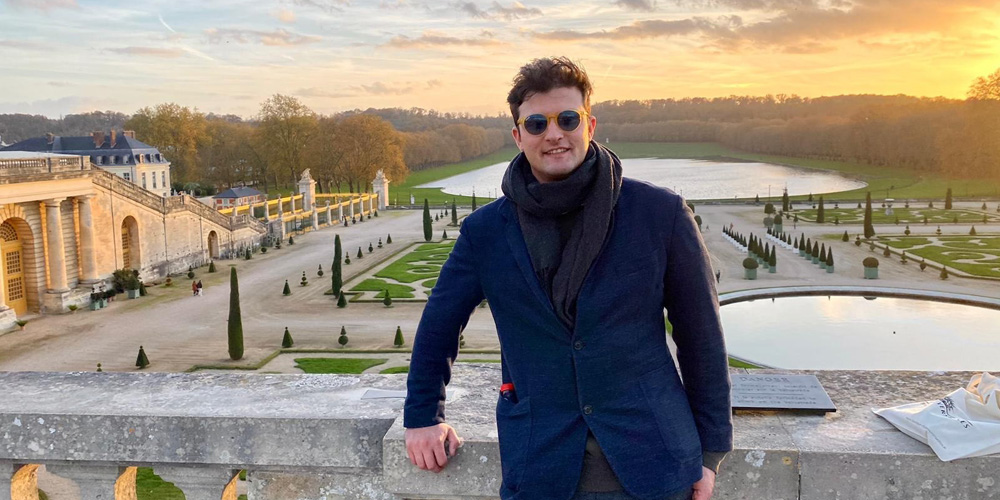Josh Fender started his academic journey with a year at the University of Alberta (U of A), initially pursuing a degree in engineering. However, he soon realized that the rigid curriculum didn’t allow for self-discovery and creative expression, something he knew he needed in his life. He switched to arts, and considered industrial design, but ultimately decided to return home and explore the diverse and open-ended opportunities at UBC Okanagan.
The flexibility of UBC Okanagan’s fine arts degree allowed Fender to explore various interests, including sculpture and digital media.
“I was able to take classes where I could combine technology and creativity, and by my fourth year, I gravitated towards installation art, blending digital media and traditional sculpture techniques,” he says.
One of things he notes as being exciting and memorable for him as a fine arts student is all the collaborative work with fellow students with committees and setting up exhibitions. Fender was the vice-president of the Visual Arts Course union while an undergraduate student, helping to keep the students working together, and sharing information.
He admits that he doesn’t see himself as a boisterous or talkative leader, he prefers to be behind the scenes. “I just have an urge to get involved, and support people and feel supported.”
Working together to set up an exhibition offers a unique opportunity for students to decide on placement of artwork – making sure the pieces communicate and resonate with one another within the space.
“It was a great experience to work collectively in painting the walls, hanging the artwork, and supporting each other through every step. For me, this really fostered a sense of camaraderie and mutual support, something that I look for and work towards in many things that I do,” he says.
In his third year of the visual arts program, Fender applied to the landscape architecture program at UBC Vancouver.
“The rigorous portfolio submission process required me to compile my undergraduate art projects, and I feel that my background in art provided a strong foundation in creative and critical thinking, setting me apart from peers with more rigid academic backgrounds.”
After completing his BFA in 2018, Fender moved to the lower-mainland to start his master’s degree. He says that the skills he developed in art school, such as using Adobe Creative Suite and embracing the critique process from the visual arts classes, proved invaluable in the architecture program.
“My first-year projects, reminiscent of my sculpture classes, reinforced the importance of creative problem-solving.”
As the pandemic began, he moved back to Kelowna, continuing his studies online and securing an internship in the area. Fender’s passion for collaboration extended into his professional career as a landscape designer, working on projects such as the park along Mill Creek in Kelowna, engaging with various stakeholders, including the Okanagan Nation Alliance and local government departments.
“This collaborative approach was a natural extension of my experiences in art and architecture school, where teamwork and public engagement were integral.”
Returning to the Okanagan and making a difference in the local community has been incredibly rewarding. Working for a landscape architecture firm, he is proud of his contributions to significant projects like the rail trail, focusing on creating meaningful public spaces. He has also been able to utilize some of his skills in digital media that he learned during his undergrad to create videos for the firm to show clients what spaces could look like – a great way to be able to share designs.
Through these experiences in his undergraduate and graduate degrees, Fender says he has learned that art is not just about individual expression but also about collaboration, public engagement, and the thoughtful integration of our work into the world around us.
“My path from engineering to art, and ultimately to landscape architecture, has been shaped by a desire for creative freedom and meaningful collaboration. Each step of the way, I’ve sought to blend technical skills with artistic expression, always aiming to create spaces that resonate with and inspire those who experience them.”
